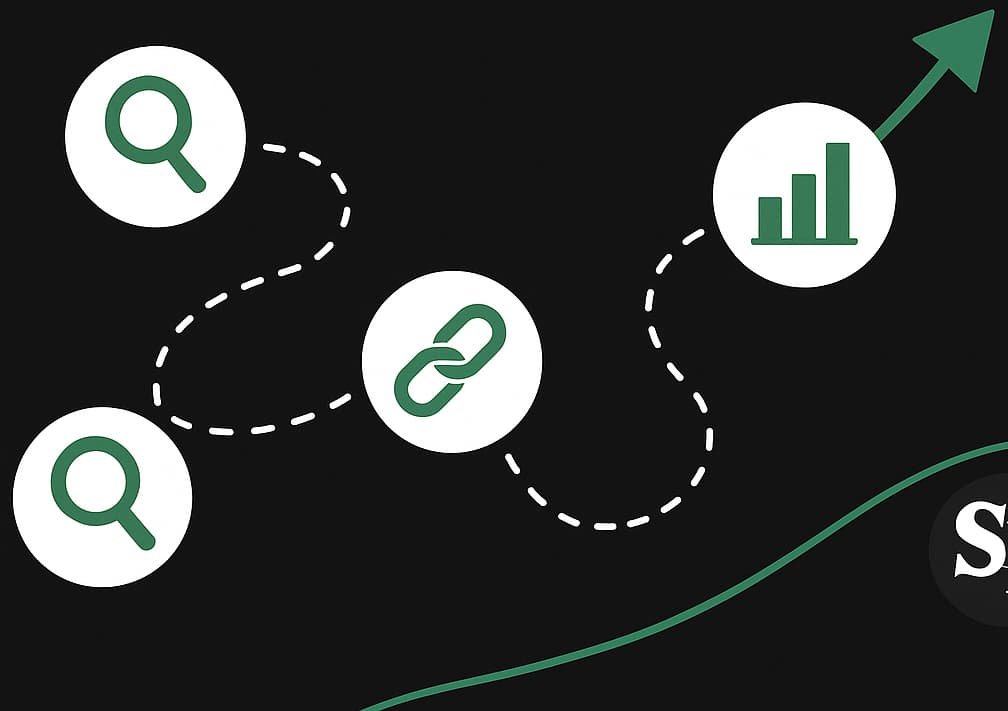Still wondering which action describes a strategy of search engine optimization?
It’s a question every business owner and marketer has asked at some point. With search engines driving nearly 70% of online experiences, understanding what actually defines an SEO strategy is critical for long-term growth.
While many think of SEO as a single task, like adding keywords or fixing site speed, the truth is that strategy goes far deeper. It’s about a series of deliberate, data-driven actions that align with your audience’s intent, improve visibility, and ultimately convert clicks into customers.
Let’s break down the key actions that make up a true SEO strategy and show why they matter in building sustainable digital success.
Understanding an SEO Strategy (Not Just Tactics)
Before diving into actions, it’s helpful to distinguish strategy from tactics.
Tactics are individual tasks (e.g. “optimize meta tags,” or “build a backlink”). Strategy is the guiding framework that determines which tactics to use, when, and why, based on data, goals, and resources.
A truly effective SEO strategy spans three broad domains:
- On-page optimization (content, structure, keywords)
- Off-page or authority building (backlinks, partnerships, signals)
- Technical SEO / site health (performance, crawlability, mobile, UX)
A solid strategy weaves all of these together and continuously adapts. To illustrate, here are the pivotal actions that describe what a good SEO strategy does.
Which Action Describes a Strategy of Search Engine Optimization?
Keyword Research & Intent Mapping
At the foundation of any SEO strategy is keyword research. But not just the sheer volume of keywords. Rather, identifying the terms your ideal users actually search, and understanding intent.
- You segment keywords into informational, navigational, and transactional types, and match them to content types (blog posts, product pages, guides).
- You prioritize high-opportunity, mid-competition, and long-tail keywords over generic, overly competitive terms.
- You also audit your competitors’ rankings to spot gaps or niches.
This is a strategic action because it directs where content should be focused and which pages to optimize first rather than randomly optimizing pages.
On-Page Optimization & Content Structuring
Once keywords and intent are clear, the strategy guides on-page optimization. Actions include:
- Crafting effective title tags, meta descriptions, and header (H1, H2, H3) structures that align with keyword targets.
- Ensuring that content is structured, readable, and logically organized (using subheadings, bulleted lists, internal linking).
- Optimizing internal linking (so authority flows, and users navigate more easily).
- Updating or refreshing existing pages (rather than only creating new ones) where performance is lagging.
A strategic approach will identify which pages to optimize first (based on traffic potential, conversion likelihood, existing rankings) rather than blindly optimizing everything.
Content Creation & Value Delivery
SEO is no longer about keyword stuffing. It’s about creating valuable, high-quality content that satisfies user intent and demonstrates authority. A smart strategy will:
- Map content themes and clusters (pillar pages, topic clusters) so content supports each other.
- Ensure every page delivers real value (answers questions, solves a problem, provides insight), aligned with Google’s focus on E-E-A-T (Experience, Expertise, Authoritativeness, Trustworthiness).
- Use multimedia elements (images, infographics, videos) when helpful.
- Monitor content performance and iterate (prune low-performers, expand promising ones).
A strategic content plan anticipates future content needs (seasonal topics, trending queries) and allocates resources accordingly.
Backlink & Authority Building
One of the more challenging but essential actions tied to SEO strategy is building backlinks or gaining authority signals from reputable websites.
- Strategic link building focuses on relevant domains, editorial links, and diversity of referring domains, rather than spammy or irrelevant links.
- You might launch content partnerships, guest posts, digital PR, or influencer outreach.
- Monitoring link growth and anchor-text profile is part of the strategic oversight.
In fact, in a study analyzing 11.8 million Google search results, Backlinko found a correlation between the number of unique referring domains and stronger rankings.
Also, in general SEO literature, backlinks remain consistently listed among Google’s top ranking factors.
Technical SEO & Site Health
A technically broken or slow website undermines all other efforts. The strategic component here involves:
- Ensuring fast load times, mobile responsiveness, and good Core Web Vitals (Largest Contentful Paint, Cumulative Layout Shift, Time to Interactive).
- Implementing proper site architecture, clean URL structures, canonical tags, and schema markup.
- Ensuring XML sitemaps, robots.txt, crawlability, and fixing crawl errors.
- Maintaining SSL (HTTPS), optimizing server response times, reducing render-blocking scripts, and compressing assets.
Speed in particular has direct impact: one study found that a 1-second delay in load time can reduce conversions by as much as 7%. Another internal analysis across 27,000 landing pages showed that sites loading in 1 second convert up to 5× more than those loading in 10 seconds.
Thus, in a strategic plan, you allocate resources to technical improvements before expecting big gains from content or links.
Monitoring, Analytics & Iteration
No SEO strategy is complete without measurement. The strategic action here is to continuously monitor KPIs and adjust:
- Track metrics: organic traffic, keyword rankings, click-through rates (CTR), dwell time, bounce rate, conversions attributed to organic search.
- Use tools like Google Search Console, Google Analytics, Ahrefs, Semrush, or SEO dashboards.
- Identify underperforming pages or keywords and reoptimize, prune, or re-launch.
- Test different headlines, meta descriptions, internal link structures, or content formats.
This feedback loop ensures the strategy evolves with changes in search algorithms, competition, and user behavior.
Why These Actions Matter in Concert
Executing just one of these (for example optimizing meta tags) without the supporting framework yields limited results. A true SEO strategy is synergistic:
- Keyword research guides content and optimization priorities.
- Technical fixes ensure that content and links can be properly indexed and served fast.
- Content creation and backlink building boost topical authority and relevance.
- Analytics illuminate what’s working and what needs iteration.
Consider a small local business. If they only built content without addressing site speed or mobile design, they might rank poorly despite useful content.
Conversely, a technically pristine site with weak content and no links won’t stand out. Strategy is the glue that ensures all parts move together toward growth.
As for scale and impact:
- According to Intergrowth’s SEO stats for 2025, 68% of online experiences begin with a search engine, underlining how critical organic visibility is.
- Another stat: SEO still drives over 1,000% more traffic than organic social media in many cases.
- And while correlation doesn’t equal causation, Backlinko’s large analysis found that pages with more referring domains generally ranked higher.
These stats illustrate two things: (1) the opportunity in search, and (2) that authority signals like backlinks and content depth still correlate strongly with performance.
Conclusion
So, which action truly describes an SEO strategy? It’s not one; it’s a set of coordinated actions guided by data, intent, and iteration. A good strategy comprises:
- Keyword research and intent mapping
- On-page optimization
- High-value content creation
- Ethical backlink/authority building
- Technical SEO and site health
- Continuous monitoring and optimization
When these actions are orchestrated intentionally, they form a sustainable SEO strategy that can drive organic growth for months and years.
Develop and Execute SEO Strategies with Sierra Exclusive
At Sierra Exclusive, we don’t believe in cookie-cutter or “one-size-fits-all” SEO playbooks.
Every business has unique challenges, audiences, and competitive landscapes. So the strategies we craft are always grounded in a deep performance analysis of your site’s current SEO health.
Our Sacramento SEO agency’s process goes beyond checking boxes. Instead, we:
- Audit and analyze your website’s technical setup, backlink profile, keyword performance, and content strengths/weaknesses.
- Design a tailored roadmap that addresses your priorities — whether that’s improving local search visibility, scaling content for enterprise reach, or optimizing product pages for e-commerce conversions.
- Execute with flexibility, adapting strategies as your site data, competitors, and Google’s algorithms evolve.
We specialize in three core areas:
- Local SEO – Helping small businesses dominate maps and “near me” searches.
- Enterprise SEO – Scaling content and technical SEO for large, complex sites with thousands of pages.
- E-Commerce SEO – Driving product visibility, improving conversions, and reducing cart abandonment through optimized category and product pages.
Because we measure and adapt constantly, the strategies we build grow with your business instead of locking you into rigid templates. That’s why brands trust Sierra Exclusive to deliver SEO results that are sustainable, measurable, and aligned with long-term growth.
Contact us today to book a free, no-obligation consultation with our SEO consultant.




